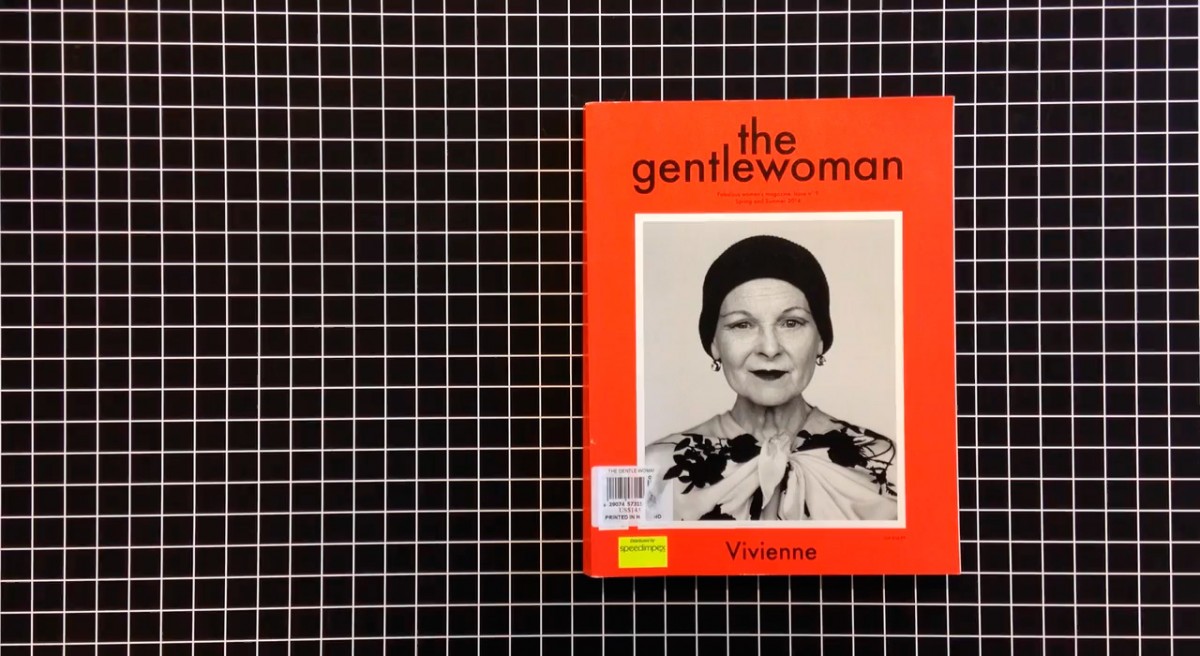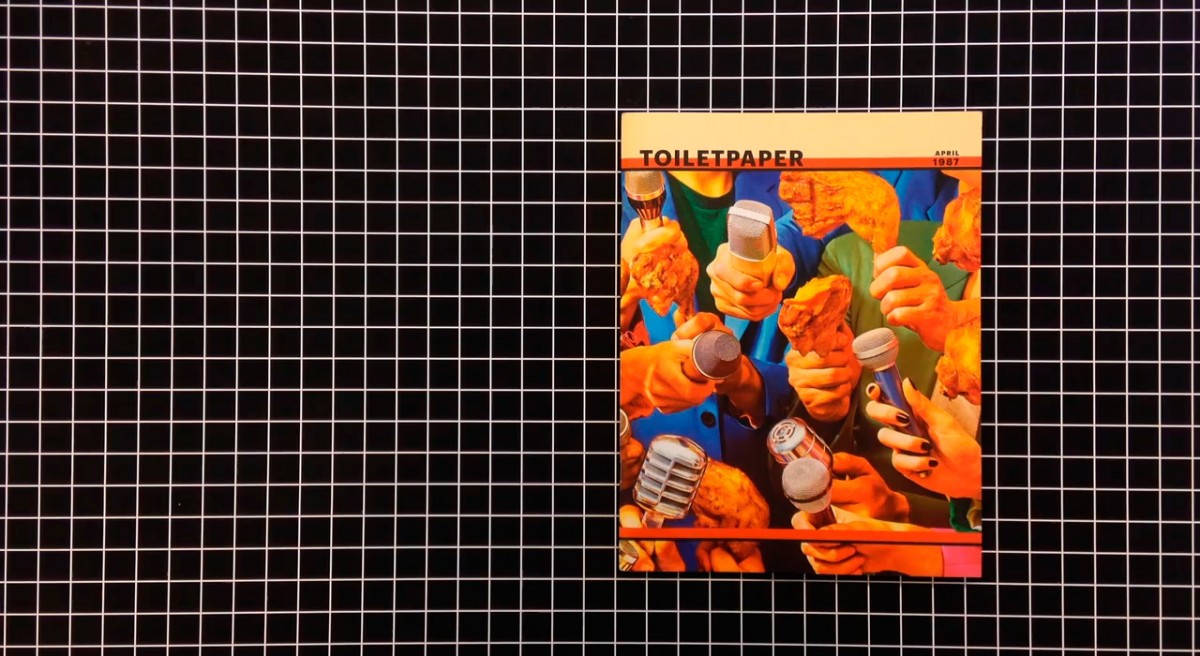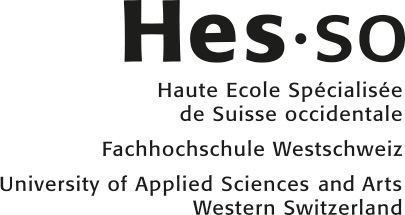Strategy Four: Digital Tailoring
Interview with Dan Michaelson

Dan Michaelson is a co-partner in Linked by Air and lecturer in graphic design at Yale University. Linked by Air is an award-winning graphic design studio based in New York City, specializing in the creation of design systems and technological platforms that grow with institutions. They work with major cultural and educational organizations, charities, artists, architects and corporations.
Tell us a bit about how you became involved into designing digital platforms.
I started Linked by Air with my partner Tamara Maletic around 2005. We met in graduate school at Yale. She had a parallel set of experiences as a student of maths and humanities. Both of us have always been interested in systems that are networks and in how people or users find their own ways through space and how they change that space.
We often talk about our work as being one that is interested in the design of public spaces, that is when we are working on an exhibition or a game or thinking about a website or an app. I think the way we see these projects is through the lens of lots of different people using and sharing these spaces.
What are some of the important shifts that have happened in your field since you began?
The importance of mobile is a big change in the last ten years. It’s exciting because that’s an area that really connects users that are moving in real space with technology.
Additionally, in the start up industry graphic design is more important than it’s ever been, in particular in the practices of many different tech companies. But, in another way, that design can be very homogenous. So it puts design firms like us, that are starting from a graphic design perspective rather than from a product perspective, in an interesting place. And it puts schools like Ecal in an interesting place too. On the one hand, you’re working in a field that is really important to the current culture. On the other hand, you are coming at it from the perspective of the surface, the aesthetics, the design, the graphic design, rather than coming at it from the perspective of the product. In a sense, you have these two cultures talking about design, but talking past each other.
It seems that the aesthetics of your work differ according to each project’s requirements. What are your thoughts on having a house style for digital design and how do you adapt your own vision to specific projects?

First of all, we are very focused on functionality and on the user experience. By users, I mean the end users of the site and the content authors, who are often staff at the institutions or clients that we work for. So, in a sense, a lot of our conversations with our clients actually start with functionality and our designs sort of flow from that. In our interactions with our clients, the visual language or colour or the choice of font can be a relatively minor part of these conversations. It is this inevitable thing that derives from the functionality or from the requirements of this system that is shaping out.
We do have a kind of ongoing agenda or story that we are telling, which manifests itself in our visual designs and in the set of functionalities that we propose to clients. It is largely coming from our clients’ needs, but of course, it is also coming from our own personal ideas about functionality systems in the world in relation to the requirements of that project.
But I guess we don’t have a house style. Still, we do have a way of looking at the world or at a set of things we think are beautiful, in particular in relation to the problems that are entrusted to us. There are visual ideas that recur and repeat and also things that we think work well and feel like us. Then again, there is also a great variety in our projects, which is a reflection of the different voices of the designers we have in the studio.
You work on the creation of design systems and technological platforms that grow with institutions. Do you need a particular mindset to get these systems to expand and evolve?
I think it’s really important to understand programming and not just front end technologies like CSS. Designers also need to understand back end structures like databases and servers. They need to think of a database as a dynamic structure devised into tables of data, each of which has its own unique structure. They need to grasp how it is mapped onto a visual design and again how that is mapped onto a user experience or flow through the site and the ways users change the site. I do think that it is really essential to be able to conceptualise a design and the way that design can live in the world and be shaped by content authors and users over time. On the front end, I also think that designers need to understand CSS and I think designers who ignore the web are confining themselves to an increasingly small niche of relatively marginal design.
That said, I do believe in a separation of roles as an option. I don’t think that designers need to be programming their own work, but they need to understand the systems and be able to work intuitively and very closely with programmers. When you develop a design, you develop that intention with a really deep knowledge of what is possible from a programming point of view, the way the world works, the way these systems work and grow and what is going to be efficient or economical to implement.
Tell us about the brief you created for the workshop at ECAL and its outcome.
I got some inspiration from a project we had done for the Yale School of Art and I asked each student to invent a module from scratch. That module could have any functionality and any design and the only limitation would have to do with a grid that would bring these modules into a spatial relation with one another on a page. Moreover, this brief had to include the students’ experience in New York, as they had recently visited the city and each of them had developed a set of photographic essays about themes they had uncovered around the five boroughs of New York. In other words, each student had to develop a unique module, a unique way of presenting their approach to New York and what they had uncovered about the city through their photography.
That module would be a sort of a filter, a way of presenting content but it could potentially accept any content. For instance, if one student thought their photography was about looking down on the ground, then this would become a module uniquely suited for presenting downward looking imagery or the idea of ground, although it would not necessarily present that student’s photographs. It could be something that could be further populated in the future. This ground module could be very appropriate for presenting grounds or floors but it could also be used to talk about New York City as well as other cities or other things.
All of the modules then came together into this diverse set of types in a way, onto this one page with all of these different types of content and imagery. It became a nice metaphor for a city that is as unplanned as New York where, although you have a grid system encompassing residences, businesses and pedestrians, what actually grows on that grid is up to individual entrepreneurs. That was the structure of the workshop. I think it’s a good structure, not just for a workshop about New York, but also for a design in general. It is a structure that we have often employed in the studio, in various different ways.
How did students do in this workshop?
I like that fact that they worked together. In a way, they were working autonomously, each working on their own module but then again, they were working collaboratively, thinking about the synthesis of all those modules into one whole website.
One thing I also wanted to mention is that there was a range in how students looked at the city and how much they wanted to generalise those observations or translate them into a totally different domain, which is the domain of interaction design, the domain of thinking about the user experience. And there was often a sort of push and pull in the workshop between interaction design and a website, this last option being more a sort of crystal goblet representing their imagery of New York rather than an interaction that was a set of metaphors for their experiences of New York. Maybe not a surprising conversation but definitely a pretty interesting one and it made the workshop quite challenging in the best kind of way.
Still using the workshop as background, can you illustrate the relationship between the designer, author and user in a system engineered to grow and evolve over time.
One of the students in the workshop developed a module called a “Pick 3” module. She invented something like twenty-four key words or tags that she observed in her photography of New York. As a user, you then click on three tags, each of which giving you an image. After the selection of the three tags has been made, they go away and you are presented with a dynamically generated photo. Each photo that is shown to you is a photo that has at least two of those tags. You click through those tags and once you get through the whole essay, it starts over again showing these twenty-four tags to choose from. It’s a simple game board that she invented. She also designed what that interaction looks like in the shape of that module. That’s hers as a designer, as an author.
Then again, other people can populate content in that module. Another author can come along and edit the page or make a copy of it and choose a different set of twenty-four tags. She is the one who uploaded this database of images that the users are going to see, but another author can come along and edit the page or make a new page and load different images or he can put more than one of these modules on the page. This is in the functionality that we built. So you can have one “Pick 3” module with her images and another “Pick 3” module with a different author’s images and tags. In other words, she created the system, she created the interaction design and the interaction flow. She decided what the interface looks like and feels like and she put in the initial content. But another author can come along and put in a different content.
And finally, she left it up to the user to choose what tags they are interested in. Of course, you get thousands of different outcomes depending on what choice an end user makes when clicking on these tags. She did not plan all of these outcomes out, but she has a sense for what these outcomes might be like. That is an example of a relationship between a designer, a content author and an end user. It is a triangle that you can kind of predict the contours of but, as a designer, you are also going to be surprised by the different outcomes that might be generated and the different ways people are using it.
How do you teach the relation between the content management system and the front end of a website?
In this workshop, it was neat because it was the content management system that was the brief, in a way. That was the given structure, which was a functioning code base.
In my class at Yale, called “Networks and Transactions”, we explore the creation of databases and server side software and the billions of transactions that occur every day between web browsers and other devices and servers around the world. Students start to get their head around that flow of information and original transactions, how content can change over time and how it is structured to think about how users move through the system from moment to moment, day to day, year to year.
We think about databases and digital networks as being an essential medium that you need to know about. So we are working hands on, literally monitoring networks and sending information across networks. We are reading about the politics of the development of the internet protocols and reading history and science fiction and criticism in order to give students a foundation in that domain.
We also learn to programme the front end and back end and we think up design projects so that the students are creating websites or inventing and programming a content management system that is optimised to store the content of their choice. Really, it is a design class, where students are evaluated based on the designs that they make, on the things that they produce and that we can use and test. It has a triangle of three parts.
In your opinion, what are the skills or attitude that will be essential to have as a designer in the future?
You are constantly faced with different options from new technologies, whether it is a new printing technology or the invention of the Macintosh. I think designers today probably are better equiped to adapt to change than previous generations of designers, because the idea of technological change is now such a prominent aspect of our culture, rather than this kind of thing that hits you from behind. I think you need to use the stuff that is in the world. Use the web, get a smartphone and pay attention to the things you are using and that you like and don’t like.






